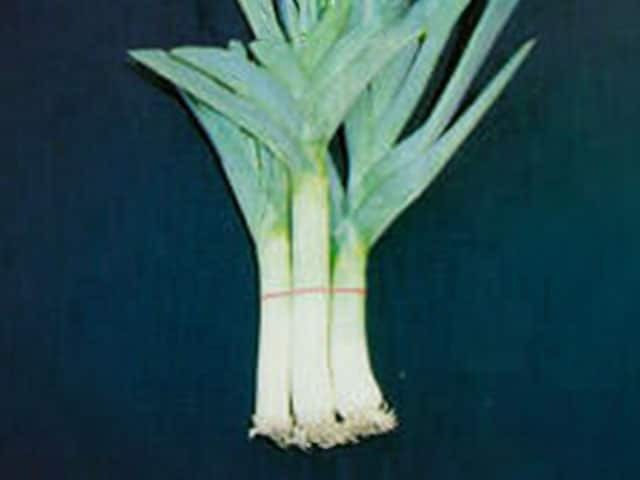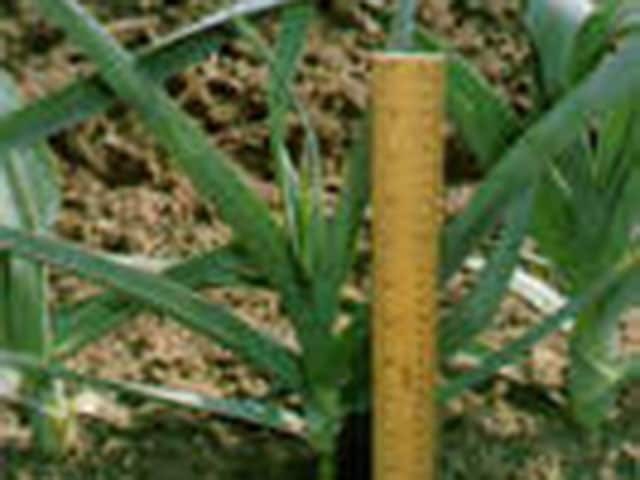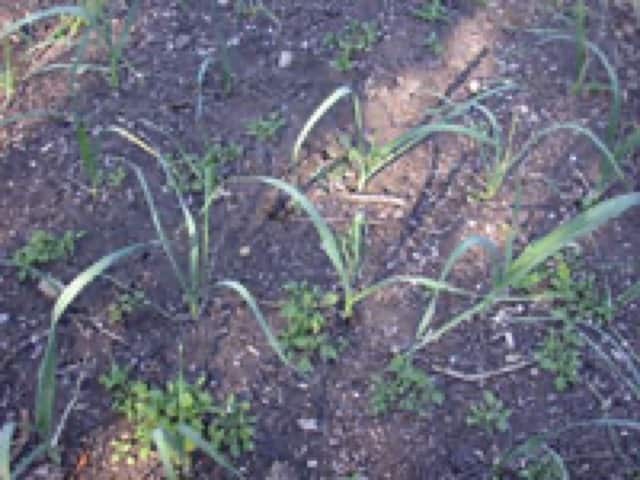Main menu
Common skin conditions

NEWS
Join DermNet PRO
Read more
Quick links
Leek — extra information
Common name: |
Leek |
|
Botanical name: |
Allium porrum |
|
Family: |
Liliaceae, Amaryllidaceae |
|
Origin: |
Originally native to the Eastern Mediterranean area and Asia, leeks have been cultivated for more than 3,000 years and have long been popular in Europe. |
|
Description: |
A hardy biennial vegetable cultivated as an annual. It has a thick, white, stem-like portion which is composed of tightly concentric, succulent layers of leaf bases, each of which parts at the top to form a large, grooved, strap-shaped, grey-green leaf. |
|



Uses: |
Grown as a vegetable with a flavour more refined, subtler, and sweeter than the standard onion. Also grown for its aesthetic appearance , particularly as an exhibition vegetable. |
|
Allergens: |
Diallydisulphide |
|
Allergy: |
Urticaria, allergic contact dermatitis as well as rhinoconjunctivitis, bronchial asthma and exercise-induced anaphylaxis. |
|
Cross reactions: |
Onion and garlic |
|
Other information: |
In 640 A.D., the Welsh wore leeks in their hats to distinguish themselves from the enemy during the battle between King Cadwallader of Wales and the Saxons. The leek became an emblem of pride in Wales, and Welshmen wear the leek to commemorate King Cadwallader's victory on St. David's Day, March 1st. The leek in Hebrew is called karti, which is a pun on another Hebrew word yikartu, meaning "to be cut off." Thus, the Jews eat leeks at Rosh Hashanah to symbolise a wish for enemies to be cut off. Nero ate leeks with oil regularly, thinking they were good for his singing voice. Perhaps Nero got the notion from Aristotle who claimed the clear cry of the partridge was due to its diet of leeks. |
|
Patch test: |
Leaf as is, diallydisulphide |
|
References
- Jimenez-Timon A, Rodriguez Trabado A, Hernandez Arbeiza FJ, Porcel Carreno S, Rodriguez Martin E, Agustin Herrero J, Cobo Lopez R. [Anterior rhinomanometry as a diagnostic test in occupational allergy caused by Liliaceae]. Allergol Immunopathol (Madr). 2002 Sep-Oct;30(5):295-9. Spanish.
- Perez-Calderon R, Gonzalo-Garijo MA, Fernandez de Soria R. Exercise-induced anaphylaxis to onion. Allergy. 2002 Aug;57(8):752-3.
- Asero R, Mistrello G, Roncarolo D, Amato S. A case of onion allergy. J Allergy Clin Immunol. 2001 Aug;108(2):309-10.
- Arena A, Cislaghi C, Falagiani P. Anaphylactic reaction to the ingestion of raw onion. A case report. Allergol Immunopathol (Madr). 2000 Sep-Oct;28(5):287-9.
- Cadot P, Tits G, Bussels L, Ceuppens JL. Asthma and hand dermatitis to leek. Allergy. 2001 Feb;56(2):192-3.
- Sanchez-Hernandez MC, Hernandez M, Delgado J, Guardia P, Monteseirin J, Bartolome B, Palacios R, Martinez J, Conde J. Allergenic cross-reactivity in the Liliaceae family. Allergy. 2000 Mar;55(3):297-9.
- Perez-Pimiento AJ, Moneo I, Santaolalla M, de Paz S, Fernandez-Parra B, Dominguez-Lazaro AR. Anaphylactic reaction to young garlic. Allergy. 1999 Jun;54(6):626-9.
- Anibarro B, Fontela JL, De La Hoz F. Occupational asthma induced by garlic dust. J Allergy Clin Immunol. 1997 Dec;100(6 Pt 1):734-8.
- Niinimaki A. Scratch-chamber tests in food handler dermatitis. Contact Dermatitis. 1987 Jan;16(1):11-20.
- Fenwick GR, Hanley AB. The genus Allium--Part 3. Crit Rev Food Sci Nutr. 1985;23(1):1-73. Review.
- Lovell CR.1993, Plants and the Skin, Blackwell, Oxford.
- Mitchell JC, Rook A, 1979, Botanical Dermatology, Plants and Plant products injurious to the skin, Greengrass, Vancouver.
- Botanical Dermatology Database.
